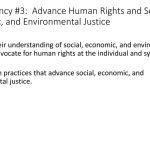Navigating the world of senior services can often seem like a daunting task. The multiplicity of options, coupled with the critical nature of the services needed, can make it overwhelming. One such service that stands out due to its comprehensive nature is PACE—Programs of All-Inclusive Care for the Elderly.
Below is a brief overview of what PACE is, who’s eligible for it, its process of enrollment amongst a few other aspects related to senior service. These points should help demystify this beneficial aspect of senior care:
- Exploring Senior Services: A wide array of assistance designed to support aging individuals’ specific needs.
- What is PACE? A comprehensive care program designed primarily for seniors dealing with chronic conditions.
- Eligibility for PACE Program: Primarily available to people aged 55 and above who require a nursing home level care.
- PACE Enrollment Process: An application procedure involving an assessment to determine eligibility.
- Pace Payment Methodology: Tailored payment methods to suit individual income conditions.
The abovementioned points should provide an introductory understanding of the PACE program and senior services. However, it’s well worth exploring further and researching in-depth about these invaluable resources for supporting our loved ones as they age.
Contents
A Closer Look at PACE and Senior Services
One particularly enlightening source is the blog post titled “From helplessness to hopefulness: A shift in perspective on senior care” on the St.Paul Pace site. This insightful piece can be accessed here. It provides a deep dive into PACE and its many benefits for aging individuals.
By exploring this piece thoroughly, you should be able to gain a clearer understanding of both the value of senior services and PACE’s role within it.
Always remember that primary objective of these services and programs is to allow our seniors to lead healthier, safer and more comfortable lives. So any time spent understanding them better is time well invested.
Lastly, while handling this sensitive aspect for our loved ones, patience, respect and empathy goes a long way in attaining the best possible outcome.
Exploring Senior Services

Navigating the web of senior services can seem daunting, but resources like the Eldercare Locator can simplify the process.
- The Aging Network: A multi-tiered network orientated towards ensuring older adults live with independence and dignity.
- Caregiver Supports: Care assistance on different levels, designed to ease the strain on those caring for older adults.
- Nutrition Services: Home-delivered meals and dietary assistance.
- Elder Abuse Prevention: Services rendered to ensure the safety and physical well-being of our seniors.
The Eldercare Locator provides an easy-to-use database that enables caregivers or seniors themselves to find appropriate resources at local or state level.
The database includes a host of different resource categories, such as agencies focused on aging issues both locally and on state level, Native American Aging Programs, and Aging and Disability Resource centers.
Aim is to make information accessibility simpler for individuals who need help in eldercare. By simply entering their zip code or city and state on the site, users can unearth an abundance of tailored resources.
Also included within these resources are legal services as well as programs aimed towards the prevention of elder abuse. The State Health Insurance Assistance Program can provide guidance about health insurance while the Long-Term Care Ombudsman Program can assist those residing in long-term care facilities.
What is PACE?

PACE, or Program of All-Inclusive Care for the Elderly, is a home-based healthcare initiative designed for older adults with intricate medical requirements. The comprehensive program offers custom-tailored care delivered right in the comfort of one’s own home.
The unique approach of PACE revolves around individual patient needs. Its construction affords unprecedented flexibility involving health service providers, family members, and caregivers. This collective collaborative effort helps provide smooth healthcare delivery while aiding participants in comfortably living within their community.
This program is executed by an interdisciplinary team proficient in older people’s care. Through close work with patients and their family units, this team orchestrates effective plans of care tailored to unique patient demands.
- Persistent Financial Stability: Once enrolled in PACE, your monthly budget remains constant despite alterations in your service needs.
- Comprehensive Coverage: PACE covers all services under Medicare and Medicaid, including additional medical necessity failings by these programs.
- Diverse Medical Services: From prescriptions to hospital visits, doctor appointments, or nursing home stays – PACE has it covered.
- Social Services: PACE guarantees access to rehabilitation services and social support networks along with transportation as needed.
An encouraging feature of PACE is its overwhelming parental feedback: 97.5% of family caregivers would recommend PACE! Around 95% of enrollees live independently within their communities, averagely taking 16 sponsored trips per month.Stats show a staggering number illustrating the extent of accessibility the program enables: nearly 22,000 meals served daily.
Eligibility for PACE Program

You don’t need to be a beneficiary of Medicare or Medicaid to join the PACE program.
Participants are required to be at least 55 years old, ensuring seniors are primary beneficiaries.
Location is key as one must reside in a region where a PACE organization operates, enabling easy access to services.
The candidate’s health status must require a nursing home-level of care, as certified by their respective state. This ensures that the aid provided is adequate and appropriate.
Potential PACE members need to be able to live safely within their community with the support offered by the PACE program.
Process of PACE Enrollment

The first step towards enrolling in PACE revolves around seeking help from a community-centric eldercare service. This can be done through a utility like the Eldercare Locator.
This public tool is committed to connecting elderly individuals and their families to essential services within their locales. You merely need to input your zip code or city and state details.
- Commencing the search: Utilize the Eldercare Locator as a starting point for the necessary aid in your community.
- Connection options: The tool is reachable both online and via phone, offering convenient avenues for assistance.
- Working hours: Dial the toll-free number from Monday to Friday, preferably between 8am and 9pm Eastern Time for optimal service.
The digital platform associated with it also prioritizes those who have donned the role of caregivers.
This is seen through their ‘Caregiver Corner’, filled with resources created specifically for these unsung heroes, thereby cementing its position as an all-encompassing eldercare platform. To explore more about such services, you can visit the Eldercare Locator website.
Armed with this knowledge, the process of PACE enrollment becomes significantly less daunting. With a little help from your community’s resources, you can navigate these steps with confidence.
Comprehensive Assessments in PACE

The initial comprehensive assessment, a pivotal part of the PACE, is meticulously conducted by an interprofessional team. It’s performed in-person using standardized health-risk assessment forms designed by the PACE organization.
Assessment Process: A Collaborative Venture
The interdisciplinary team (IDT) at the PACE, expertly leads the process. This lineup includes professionals from diverse healthcare areas. They efficiently direct the evaluation, empowering each member’s unique perspectives and skill sets.
This in-depth evaluation generally transpires within three weeks of care plan initiation. Delays are addressed by forgoing the incomplete assessments and revising it later when all data is available.
Prioritizing and Documenting: Subsequent Steps
In circumstances where multiple participants enroll simultaneously, this system manifests its true potential by prioritizing assessments based on acuity of care level.
The completed assessments are archived into medical records with clear documentation. This ensures transparency of each patient’s condition and treatment progress.
Formulating and Adapting the Care Plan
Following the assessment, the IDT unifies all results into a single constructive Plan Of Care (POC). This dynamic system allows regular updating of POC in reaction to any shifting circumstance or delay.
An integral requirement for a PACE organization centers around effectively handling emergencies and disasters, securing participant safety at all times.
Equally essential is the possession of accurate promotional materials that provide specifics about services, benefits and participant responsibilities.
Understanding PACE Payment Methodology

The Commercial Property Assessed Clean Energy (C-PACE) is revolutionizing power and energy distribution by offering cost-effective renewable alternatives.
It provides an avenue for property owners to install energy-efficient upgrades or systems, which are funded through an added voluntary assessment on their property tax bills.
- The value of the PACE assessment is not tied to the individual or business owning the property, but rather to the property itself.
- When a property changes ownership, the PACE obligations transfer along with it – allowing a smooth transition with no financial upheavals.
- C-PACE aims to eliminate financial constraints by covering up to 100% of project costs, thereby encouraging more property owners to consider efficient energy sources.
The method of repayment for C-PACE is flexible, accommodating varying timelines ranging from 5 to 30 years.
This extended repayment option coupled with lower-than-average interest rates make C-PACE financing an attractive opportunity for many.
In essence, C-PACE addresses the split-incentive issue where landlords are reluctant to invest in energy improvements as they don’t receive direct benefits due in part to long leases.
It should be noted that all payments are managed and collected locally by government bodies. Thus, ensuring a transparent and secure process for all parties involved.
C-PACE assessments typically yield priority over existing mortgages in scenarios involving foreclosure- an aspect that provides financial security for both investors and property owners alike.
C-PACE arrangements, simply put, aren’t traditional loans. They’re innovative public-private partnerships that utilize an already established tax structure.
Benefits of Home Care with PACE

The Programs of All-Inclusive Care for the Elderly (PACE) offer a wide array of benefits. Foremost on this list is home care.
PACE provides all-inclusive care designed to tend to the needs of seniors in their homes. This encompasses physical and occupational therapy, laboratory/x-ray services, meals, and even recreational therapy.
Moreover, PACE programs are available nationwide. With 167 programs in 33 states, they extend valuable services to over 76,000 participants across districts and states.
| PACE Services | ||
|---|---|---|
| Adult Day Care | Meals | Transportation |
| Dentistry | Nursing Home Care | Social Services |
| Emergency Services | Nutritional Counseling | Social Work Counseling |
| Hospital Care | Primary Care | Recreational Therapy |
| Inclusive Medical and Social Services for Seniors | ||
This table depicts the extensive range of medical and social services available through PACE programs.
Enrollment in PACE programs is voluntary. Eligibility criteria include being at least 55 years old, frail, and qualifying for nursing home care.
This makes PACE an excellent alternative to nursing home care. Not only does this model enable seniors to stay in their community, but it also provides comprehensive onsite and in-home services.
Elderly Care Advantages
Senior Services and PACE offer substantial benefits for elderly care, providing comprehensive health care, social interaction, and enhanced living quality. These programs promote independence, decrease hospitalizations, and support seniors’ health and wellness. An excellent option for families seeking optimal care for their loved ones.




